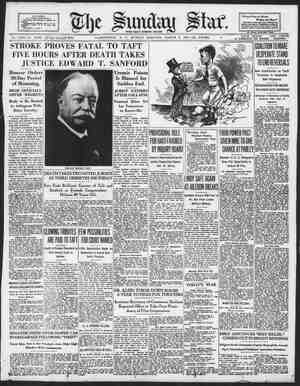Evening Star Newspaper, March 9, 1930, Page 86
You have reached the hourly page view limit. Unlock higher limit to our entire archive!
Subscribers enjoy higher page view limit, downloads, and exclusive features.
water serves commerce and imdustry”; and, “Thus the forest is a conserver of water and a regulator of water supply, feeding perennial springs and ministering to the needs of man- Visitors frequently ask Mr. Lindstrom where his production staff gets it supply of actors. He smilingly points out: “There are certain well known Washington actors and actresses who help us out now and again at a nominal fee, But in scenes which do not require an-extensive histrionic background one is lable to see any one of the half dozen charming members of my office staff, largely feminine, holding forth. Three of the younger girls take turns at assum- ing small ingenue parts, while two of our more mature ladies fill the bill admirably as mother types. As for the juvenile roles, many of the sons and daughters of our office employes be- come so accustomed to helping us do a picture people borrowed from the various other seg- ments of the Department of Agriculture some- times aet for us.” Mr. Lindstrom goes or. to explain that though Hollywood may maintain its “star” system, no such thing exists under the Government movie magnates. “We aim to stress characterization rather than the name of a given actor, for the imple reason efinite aim § §‘§E§E EESEEE!EEs | . THE SUNDAY STAR, WASHINGTON, D. C, MARCH 9, 1930. done to perfection; roasted potatoes, peas, gravy, coffee and the rest of the trimmings. Unfortunately, however, the taking of meovie scenes is a slow and painstaking affair, and when this particular one finally was shot, everything not only was cold, but greasy and clammy, and the good woman derived untold anguish at the gruesome sight of the actors swallowing, with unmistakable disgust, the food Scene in motion picture editing room, United States Department of Agriculture. Thefilmhdfiedonthegredroaerdlherigh&! A& for the Government’s scenario writers, there are many and sundry of them, Mr. Lindstrom says. He himself, and the “big boss,” Mr. Evans, have written quite a few, though ITALY.vhbhhsbeenoudhm of the post-war world because of its rapid and energetic hunt for stability, is rapidly be- coming a machine nation. With her tremend- ous capacities for water power, her turn to ma~ chinery holds great potentialities for future ! machinery in 1927 more than thre times the 1913 figures. A striking characteristic of Italian according to the report, is bl ¥ym might never see a sound motion picture. “That people do indeed gather for miles around to view our films is a well known fact, imports of industrial machinery fell from 63,000 metric tons for the first nine months of 1926 to 38,000 tons for the same period in 1927, such shipments rose to approximately 40,000 tons in the corresponding period of 1928. Germany is the largest supplier of machinery to Italy, fol- lowed By Great Jrityin Ang Frapee. ... ... pastures. A similar Government cam- being conducted in Virginia. improve paign is ‘This sort of visual education is achieving re- markable results. R. A. Ramsey, well known fleld worker of the department, said recently: “You might not suppose that motion pic- tures could help eliminate the dreaded tick tion. Hag it not been for the movies on ticks that were shown in Red River County, for of the bee and not the sugar cane. Since that time and until 1920 only five JRREETT FRFRE 2 éggggggfé | i Est a4 g
